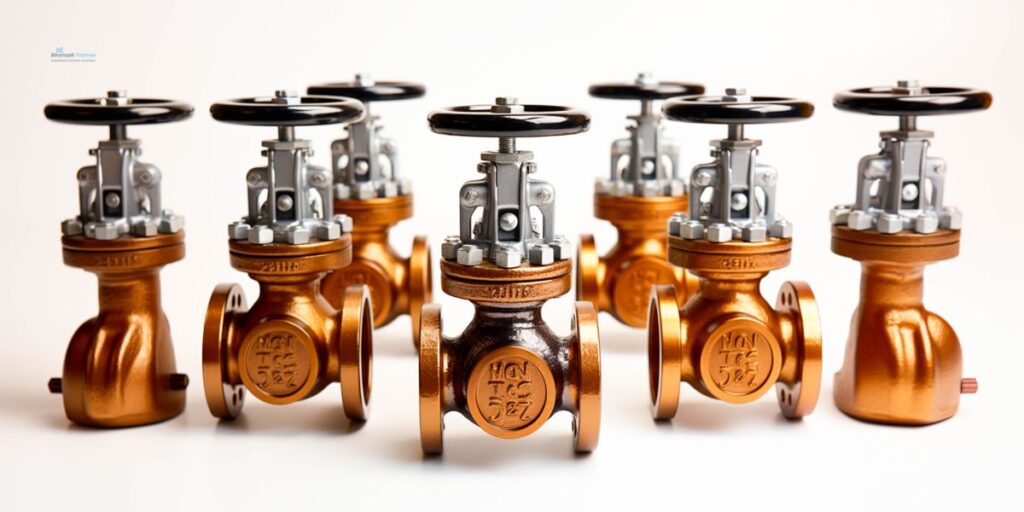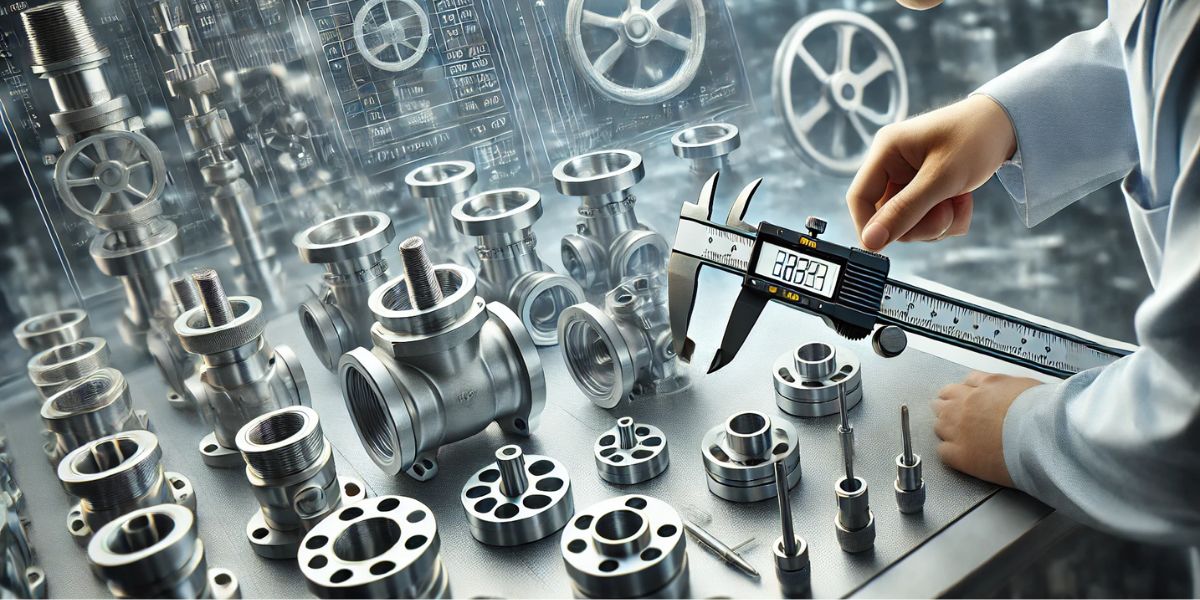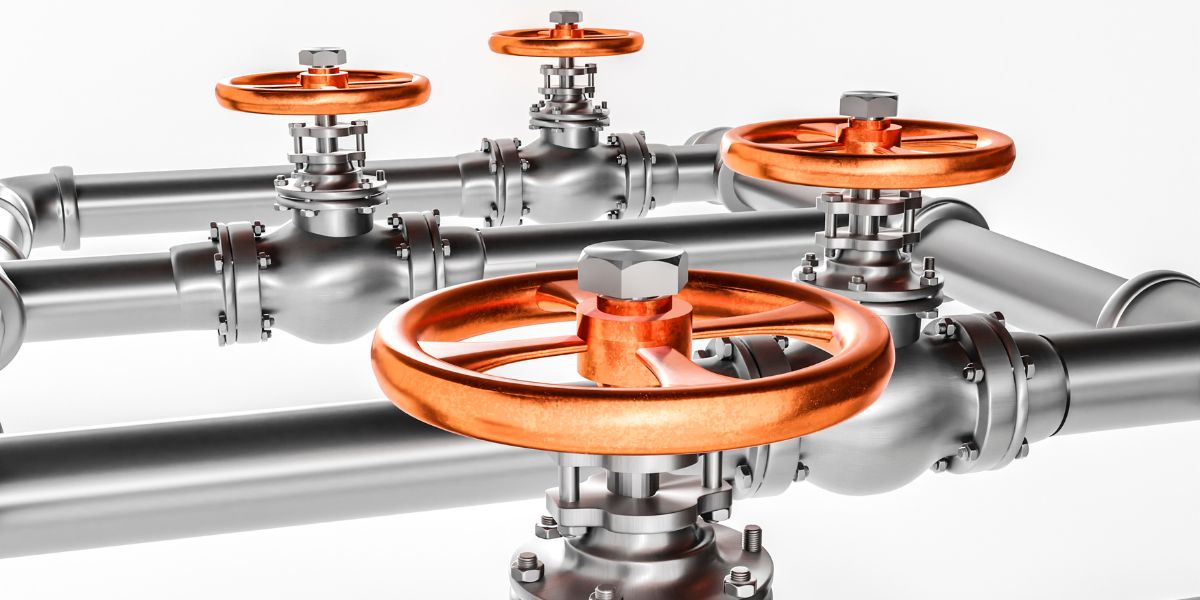What Are The Different Types Of Valves?
Valves are precision techno components that play a crucial role in controlling the fluid flow rate in several mechanisms. Whether it is industrial components or our home piping system, valves are everywhere in use. Valve components manufacture different valves, each with a specific purpose and mechanism. Their manufacturing and applications vary from each other. Therefore, complete understanding is necessary to make the right choice. To get a keen sense of the mechanism and application of different types of valves, read the following article.
10 Types Of Valves That Are Most Commonly Used In Several Industries
Quarter Turn Valves
These valves have a rotatory mechanism that allows the block and movement of fluid in a piping system. Most of the time, rotation is limited to 90 degrees; hence, these valves are known as quaternary turn valves.
Here are some of the best examples of quaternary turn valves

Ball Valves
Ball valves, also known as control valves, are one of the best examples of quaternary turn valves. The mechanism of a ball valve includes ported spheres that act like two joints within the pipe system. The coupling between two spheres enables one to revolve without turning the other unless and until the angle reaches up to 90 degrees. As soon as the angle reaches ninety degrees, the valve opens, and the fluid starts flowing. Precision movements of ball valves can effectively begin to or stop the flow of fluid in the piping system.
Application of Ball Valves
- Ball valves are massively used in water supply systems to control the rate of flow of fluid.
- Ball valves play a crucial role in industrial natural gas pipelines for their quick shut-off capability.
- HVAC systems also employ these valves to regulate the airflow to heating systems.
Butterfly Valves
Butterfly valves are a type of quaternary valve that is primarily used in large industrial pipelines and sewage treatment canals. They are perfect alternatives to ball valves where a quick shut-off is abandoned. Their mechanism consists of a disc-shaped obstructive clog that controls the flow of fluid. The obstructor resembles the movement of butterfly wings, hence the name.
Application of Butterfly Valves
- Sewage treatment systems employ butterfly valves to regulate fluid flow.
- In shipbuilding, these valves are used to manage seawater.
Plug Valves
Plug valves possess a mechanism similar to that of bulb valves; however, they contain conical tapered plugs instead of ported spheres. The plugs can move inside the valve structure and have one or more hollow pathways that control the flow of fluid. Plug valves again have two distinct variations, i.e., lubricated plug valves and nonlubricated plug valves.
Application of Plug Valves
- In the oil and gas business, plug valves are widely employed in both upstream and downstream processes.
Multi-Turn Valves
Unlike quaternary turn valves, multi-turn valves serve an angle of rotation above 90 degrees. These types of valves are connected to a threaded stem, which is further attached to the hand wheel. An operator can seal the fluid flow using the hand wheel. When the hand wheel is turned, the valve is displaced from its position, and an opening is created.

Globe Valves
As their name suggests, globe valves utilize globe-shaped spherical blockers to obstruct the flow of fluid. Two-way and three-way globe valves are the most frequently used globe valves. However, two-way globe valves are commonly recommended for precision component manufacturers.
Application of Globe Valves
- Globe valves are used to regulate steam flow in different mechanisms.
- These types of valves are commonly used in chemical industries to control the flow of gas.
Gate Valves
Gate valves, instead of cylindrical blockers, possess flat iron barriers to obstruct the flow of fluid. They are economical and provide lower head loss than other multi-turn valves. However, their flow restriction capabilities are comparatively less than those of globe valves.
Application of Gate Valves
In several sectors, gate valves are widely utilised for throttling. Hydraulic fluid flow control also uses these kinds of valves.
Needle Valves
Needle valves control the flow of fluid using a conical needle. The needle is situated at the gate of the orifice. Hence, the upward and downward movement of the needle can precisely restrict and control the flow. Just like bulb valves, these types of valves also provide a quick shut-off.
Application of Needle Valves
Needle valves are used in piping systems to control the flow of water. These valves play a crucial role in high-pressure treatments.
Other Type Of Valves
Some other valves are also used for specific requirements in the pipeline system.

Pressure Safety
Valve A pressure safety valve functions similarly to a guardian for pipelines and machinery. These valves intervene when they sense excessive pressure or a lack of air inside. When the pressure reaches a specific point, it releases some air or pressure.
Pinch Valve
The pinch valve, sometimes referred to as the clamp valve, helps regulate fluid flow by using a rubber tube and clamp. The best valves for regulating fluids containing suspended particles are pinch valves.
Check Valves
Check valves in pipelines to prevent backflow. The valve is opened by fluid pressure. The check valve’s clever feature is that it shuts off if any fluid flows in the incorrect direction.
Solenoid Valves
To open or close the valve or change the direction of the flow from one outlet to another, solenoid valves employ a linear sliding obstructer. These valve types come in a wide range of diameters, ranging from one millimetre to one hundred millimetres.
Final Words
In a nutshell, valves are precision components that serve a huge role not only in industries but in our daily lives, too. However, the functionality depends on choosing the right valve for your work. Therefore, understanding the mechanism and application of different types of valves becomes very important. Before purchasing, connect with renowned precision components manufacturers like Bhansali Techno Components to get a keen idea of what to buy in valves and what not.




